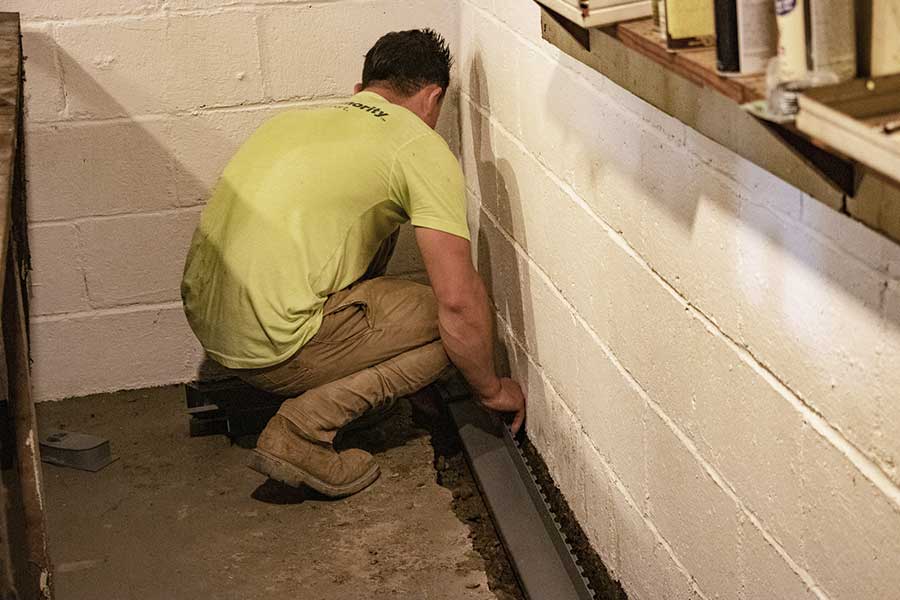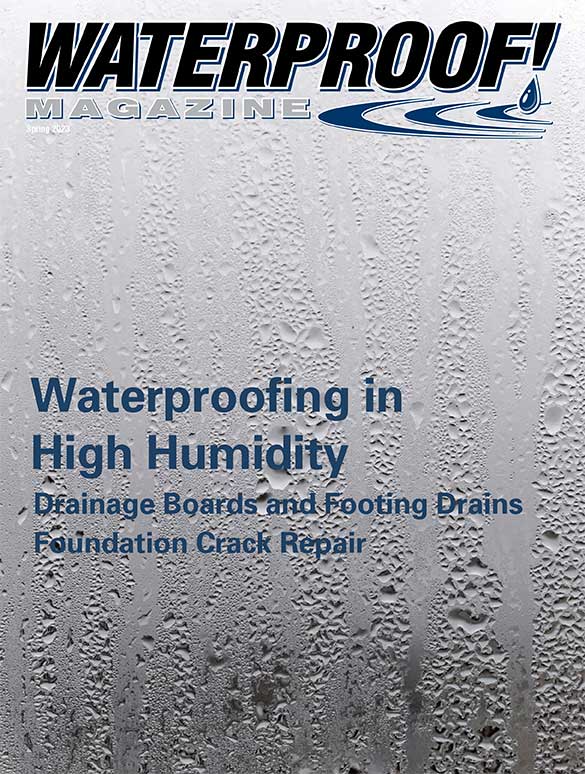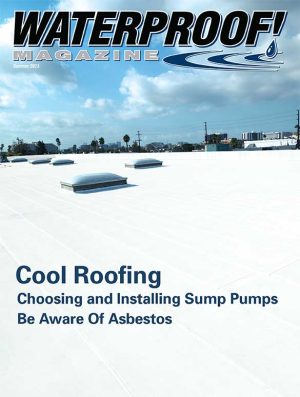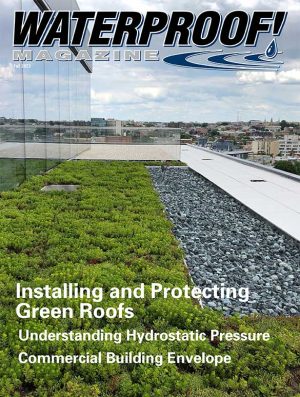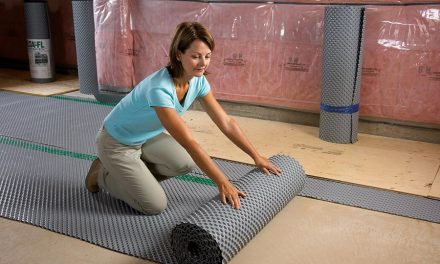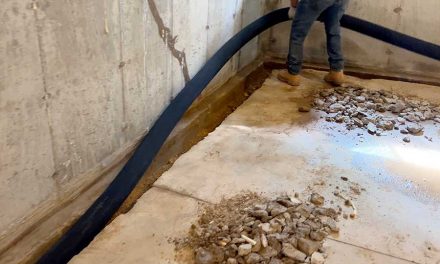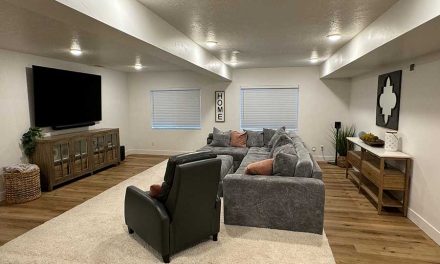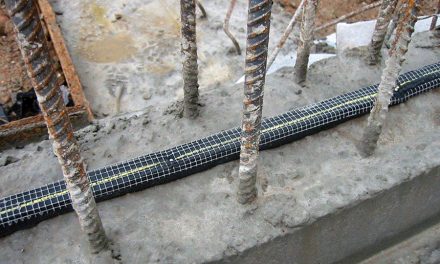By Holly Richards-Purpura
An Ohio Basement Authority crew member places BasementGutter in the trench.
As a homeowner, it can be extremely frustrating and challenging dealing with any kind of repairs around your house, including in the basement and/or crawl space. No one wants to be on the receiving end of problems in these areas including leaking water, mold, high humidity, or cracks. These issues can often go ignored by homeowners who keep them “out of sight and out of mind.” But they have to be dealt with eventually, especially before selling a house. These kinds of problems can negatively impact the home’s resale value as well as owners’ ability to sell the house.
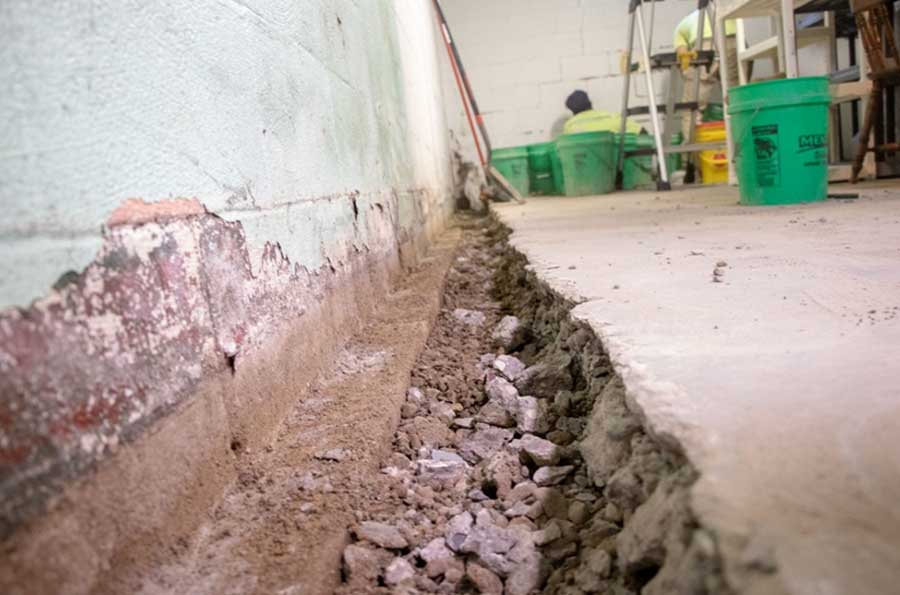
The basement’s perimeter is excavated in order to properly install the BasementGutter interior drainage system in the sub-floor.
After living in their house for 40 years, homeowners in Sunbury, Ohio (approximately 30 miles northeast of Columbus, Ohio), were ready to sell their home and move to the southern part of the country. They knew before doing so, they needed to address some lingering problems around the house like a nasty crawl space and a damp, leaking basement.
Seek Professional Assistance
In this age of DIY repairs, it may be tempting to fix a problematic basement by yourself, but this is not something to tackle on your own. It’s possible to inadvertently apply the wrong fix that doesn’t get to the root of the problem. That’s why it is best to reach out to a local basement repair professional for assistance with identifying the causes and solutions to your basement issues.
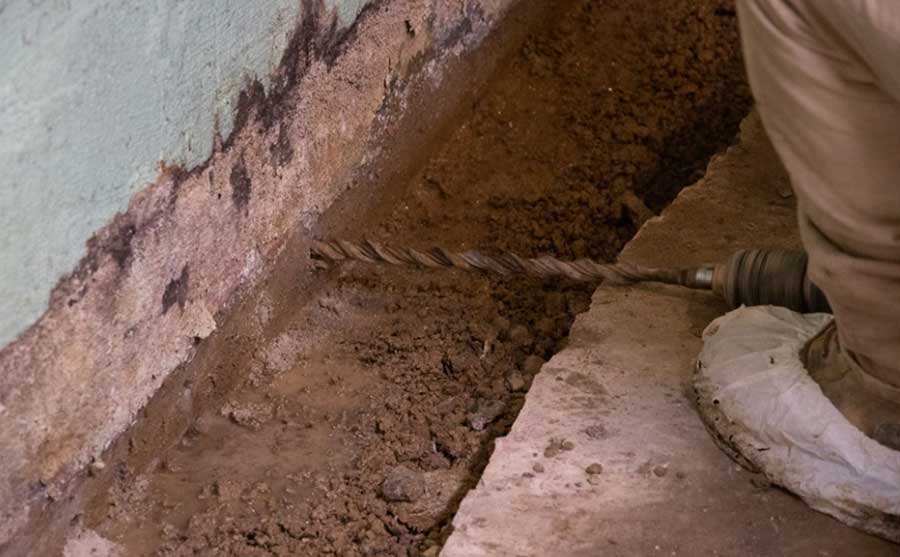
Weep holes are drilled into the bottom of the walls to allow any leaking water from the walls to flow out and into the BasementGutter system.
During their research and quest to obtain repair estimates from multiple companies, the Sunbury homeowners came across information about Ohio Basement Authority. After requesting a free inspection and estimate, they met with one of the company’s certified field inspectors.
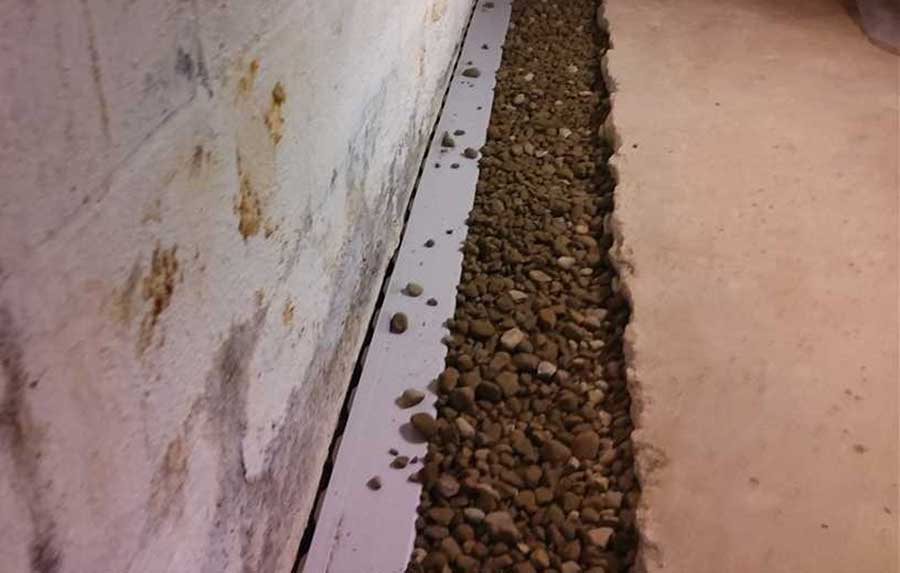
This specially designed system is seated in gravel and out of the “mud zone” below the concrete floor.
The inspector completed a thorough evaluation of the home’s basement and crawl space, and he noticed the same issues with moisture and water intrusion. There were several areas with visible water damage on the walls and floor, as well as efflorescence, indicating water was present and coming through the porous concrete block walls.
The inspector then recommended several solutions tailored to the homeowners’ specific repair needs that would nip these problems in the bud and restore the home’s safety and value. This meant addressing the leaking water at the source and implementing a solution to catch the water and remove it before it reached the rest of the basement and caused further damage. This also applied to the crawl space.
Fix the Problem the Right Way the First Time
The homeowners met with other companies for repair estimates before making up their minds. But they were impressed by the Ohio Basement Authority inspector, his professionalism, and the suggested solutions to best fit their repair needs. The owners ultimately chose to work with this company, and once the work was scheduled, an Ohio Basement Authority crew worked to install these various solutions in three days.
Work then began in the basement to address the leaking water. Ohio Basement Authority uses a three-part waterproofing system to first intercept the water, redirect it to a sump pump, and remove the water from the home. This involves the BasementGutter interior drainage system, a SafeDri sump pump, and buried exterior discharge lines.
Installing the Best Waterproofing Solutions
The floor along the basement’s perimeter was first excavated to create a trench to house the BasementGutter system. BasementGutter is different from typical drainage systems. The pipe of this French drain system is specially designed with a flange to slightly separate it from the wall. This allows water from weep holes drilled into the bottom of the walls to flow into the pipe through slots along its underside near the wall and floor. Unlike PVC pipe that sits below the floor, BasementGutter rests atop the footing and out of the “mud zone,” and it is specifically designed to not clog.
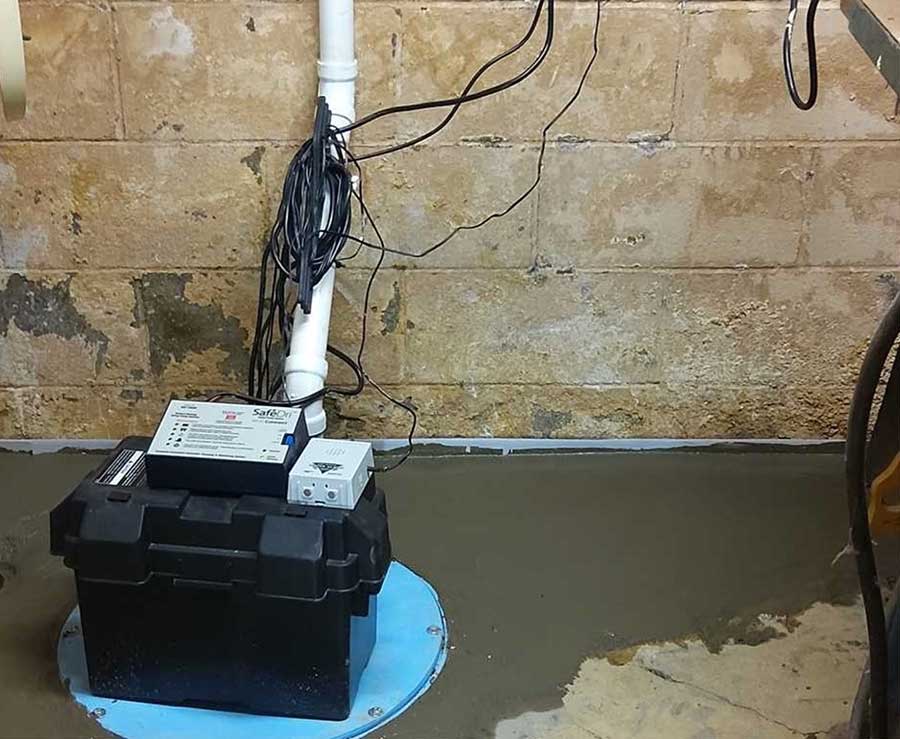
The BasementGutter and SafeDri UltraPro sump pump with backup battery are properly installed, which will help keep the basement safe and dry.
Once water is intercepted by the BasementGutter system, it needs somewhere to go. A series of interconnected pipes directs the collected water to a sump pump system to be pumped out of the basement. The crew dug a hole in the basement floor to accommodate a sump basin that houses the sump pump system. A variety of sump pump systems is available, and the SafeDri UltraPro featuring a 1/3 hp pump and backup battery was installed.
A discharge pipe was connected to the sump pump and directed to the home’s exterior. Several feet of discharge pipe were placed in the ground, directing water safely out of the basement and away from the home’s foundation.
A Comprehensive Solution
Additionally, the crew also waterproofed the crawl space in a similar manner by installing the CrawlDrain drainage system and a SafeDri Pro sump pump system. The crawl space was insulated with rigid ExTremeBloc panels on the walls and spray foam in the rim joists, and encapsulated with the 20-mil CrawlSeal vapor barrier liner. A dehumidifier also was placed in the crawl space to clean and filter the air, control moisture and humidity, and reduce odors and potential mold growth.
During the process, the homeowners’ daughter wanted to express her appreciation of the company’s representatives. She raved to the office about how polite and patient the crew was with her family, and how much care they took to keep the home clean.
All of the systems installed work together to keep water and moisture out of the house so it will be a safe, stable, and healthy home not only for the current owners but for future residents as well.
Founded in 2009, Ohio Basement Authority provides basement waterproofing, crawl space encapsulation, and foundation repair in greater Columbus and southern Ohio.
Spring 2023 Back Issue
$4.95 – $5.95
Crack Repair For Foundations
Waterproofing in High Humidity
Drainage Boards and Footing Drains
Residential Basement Waterproofing
Case Study 1: The Hyatt House Miami
Case Study 2: Bowed Block Wall Repair
Case Study 3: Miami’s Brickell View Terrace Apartments
Description
Description
Crack Repair For Foundations
By Vanessa Salvia
Different repair methods are used based on whether
the cracks affect the structural integrity or not.
Waterproofing in High Humidity
By Vanessa Salvia
High humidity does affect some aspects of waterproofing, and here’s what you have to keep in mind.
Drainage Boards and Footing Drains
By Vanessa Salvia
Water seepage into a building’s foundation is one of the biggest threats to structural integrity.
Residential Basement Waterproofing
By Holly Richards-Purpura
Addressing a nasty crawl space and a damp, leaking basement before selling a home.
Case Study 1: The Hyatt House Miami
The Hyatt House Miami Airport Hotel in South Miami, Florida, required more than 30,000 square feet of Polystick XFR roof underlayment.
Case Study 2: Bowed Block Wall Repair
A contractor from EcoSpect used Rhino Carbon Fiber’s Bowed Wall Repair Kits to reinforce a CMU basement wall.
Case Study 3:
Miami’s Brickell View Terrace Apartments
M3 Roofing complete a 6,000-square-foot re-roof project using a self-adhered, multi-ply roofing system from Polyglass.
Additional Info
Additional information
| Weight | N/A |
|---|---|
| Magazine Format | Digital Download Magazine, Print Mailed Magazine |

